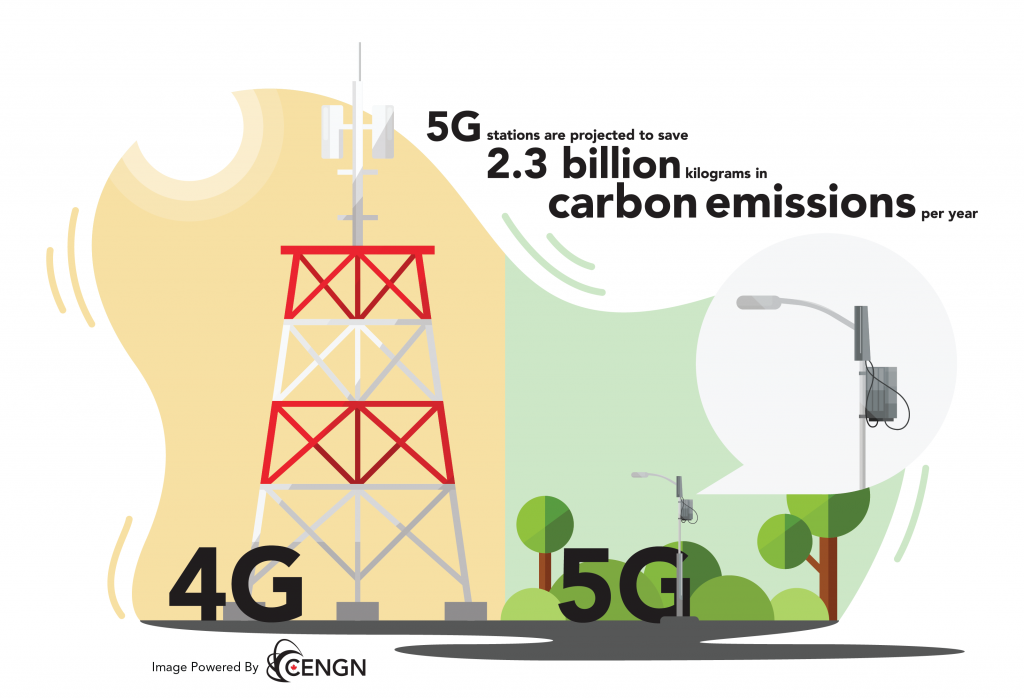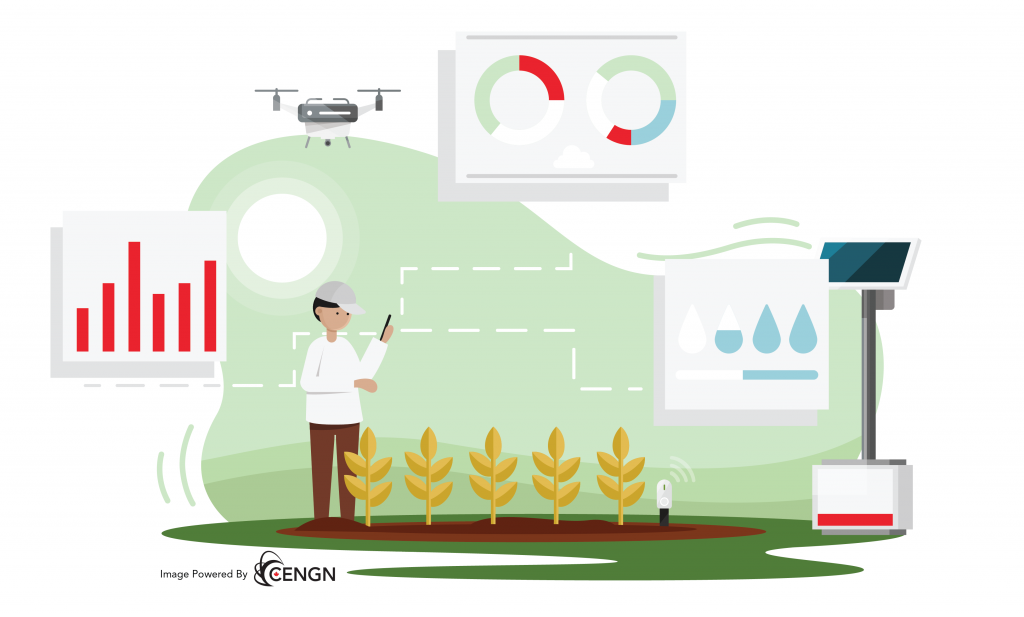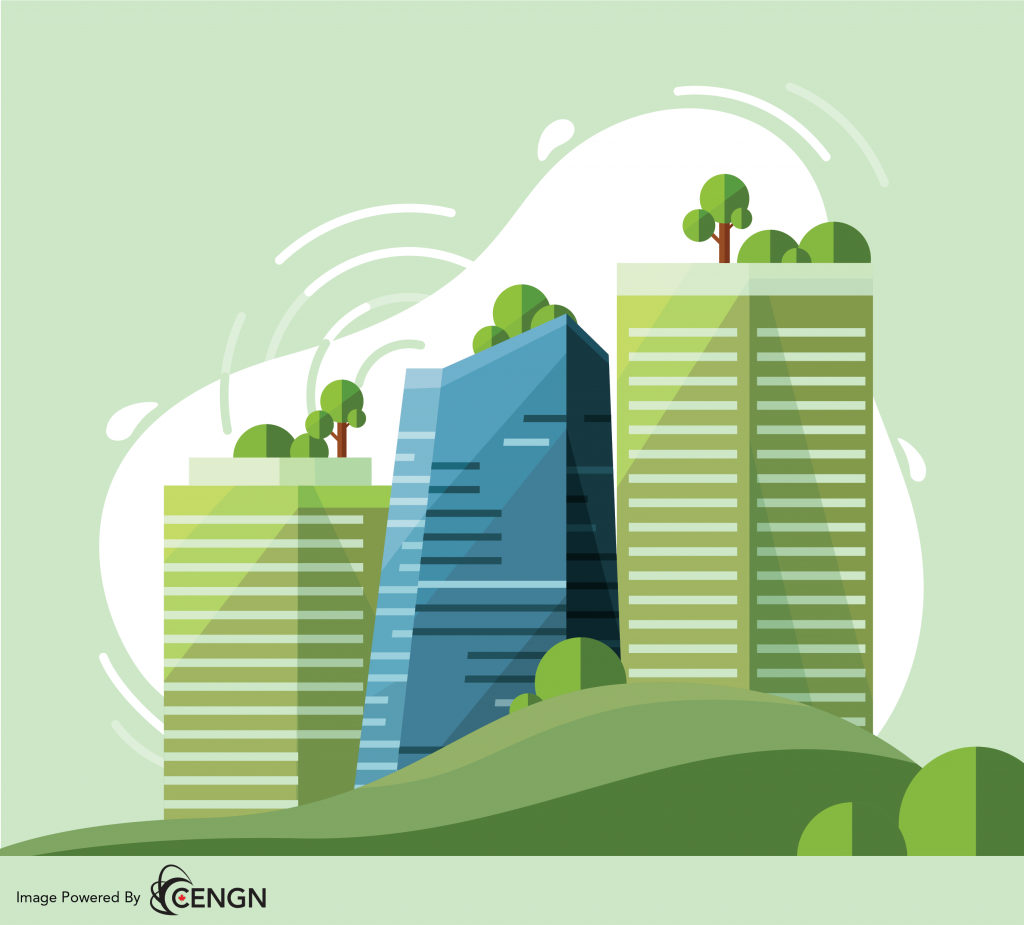More Innovation:
5G Climate Change: 4 Ways 5G is Helping the Environment
Updated: January 24, 2022
Helping our Environment with 5G
The battle against climate change is more important than it’s ever been. With the advancement of networks enabling new tech solutions, the answer to a smarter fight against climate change is in our hands. At CENGN, we aim to drive technology innovation in Canada, and we’re on the 5G technology train.
5G technologies will change the world as we know it in endless positive ways. Our new networks are the foundation for tech solutions that have only existed in our imaginations. They’re paving the way for more effective solutions to our problems, and climate change is one of the biggest.
Historically, technology has not been kind with its effect on our environment and nature, but 5G and the technologies it brings have the opportunity to flip the script. Let’s take a look at four different ways 5G can combat climate change.
1. Energy Conservation
Managing energy is the essential ingredient in combatting climate change and making our world a greener, healthier place. With 5G, we can monitor our energy consumption more efficiently than we’ve ever been able to.
To be more efficient with our energy consumption, we need to stay informed on how much energy we consume. With the 5G network, climate change technologies, smart meters, and smart energy grids, we could monitor and manage our energy consumption more effectively, keeping our planet happier.
Advanced ICT solutions powered by 5G offer the tools to reduce greenhouse gas emissions by 20% by 2030 (Source: United Nations). Looking at past data, the United States produced 6.7 billion metric tons of carbon dioxide (a greenhouse gas) emissions in 2018. (Source: The United States Environmental Protection Agency). By removing 20%, the U.S. would reduce greenhouse gas emissions by 1.34 billion metric tons in that year alone!
Many people don’t realize that 4G towers consume more energy than the new 5G stations. 4G base stations consume 80% of total network energy use, with nearly half of the electricity consumed going towards cooling the transmission equipment (Source: Huawei).
Interested in learning about the past G’s of Telecommunication? Check out this article on the Timeline From 1G to 5g: A Brief History on Cell Phones here.
5G towers have fewer heat-generating electronic components decreasing the difficulty of cooling these stations down. In Europe and Japan, companies have developed base stations that use liquid cooling and solar power technologies to optimize cooling. Compared to 4G towers, these technologies reduce CO2 emissions by up to 80% and reduce operating expenses by nearly a third (Source: IEEE ComSoc).

Major telecom provider Huawei estimates that they will build 2 million 5G base stations in China between now and 2022. Each 5G station saves 4130 kilowatt-hours (kWh) of electricity and 1125 kg of carbon emissions individually. These stations are projected to save 8.3 kilowatt-hours (kWh) of electricity and 2.3 billion kilograms in carbon emissions per year (Source: Mobile World Live). This is equivalent to the yearly CO2 consumption of 130 million trees.
A world where 5G climate change technologies exist is a world where there are fewer carbon emissions in the fight for the environment. Not only will we be able to manage our energy intake more efficiently, but 5G will also allow us to tackle the world’s impending resource shortages, including water.
2. Smart Water Management
Water is a limited resource, only 3% of the world’s water is fresh and only two-thirds of that is accessible (Source: Enterprise IoT Insights). Without improved water management, the world’s population could face water shortages as early as 2025.
It’s a common misconception that the advancement of technology will speed up climate change and hurt our resources. In reality, the deployment of 5G climate change technologies will enable sensor technologies to improve water management and create a greener future for us all.
5G will set the infrastructure for mass IoT (Internet of Things) sensor deployments, allowing for inexpensive sensors to detect harmful chemicals in the water supply and alert people of possible health hazards (Source: Brookings). These sensors can manage leaks in waterlines, provide early flood warnings, and transform the agriculture industry.
Currently, the agricultural sector accounts for 70% of the world’s consumption of freshwater per year on average (Source: Worldbank).
Unfortunately, farmers around the world must resort to using outdated irrigation systems that wastewater and play a large role in climate change. By using sensors in the soil to measure moisture levels, farmers can take the guesswork out of agriculture. By pairing IoT with 5G, data can be transferred at record-breaking speeds, making life more efficient in the fields, while at the same time limiting the need for harmful substances to our water like pesticides (Source: Brookings). A greener future is one where a farmer can walk out into the field, pull out their mobile device, pinpoint issues and monitor them in real-time.

The list of technologies that will leverage 5G for sustainable farming is immense. With 5G climate change technologies, farmers will have access to GPS guidance systems, soil electrical conductivity mapping, sprayer controls, and chlorophyll sensors to manage their crops more efficiently (Source: Brookings).
The future of farming will be strategically increased crop and livestock production while using fewer resources. Smart technologies usher in a new wave of smart farming that will help our environment, and these new technologies rely on advanced networks providing the level of speed and performance they need to function.
Future technologies leveraging 5G won’t only help farmers reduce water waste, it will help our cities do the same. Sensors are the key ingredient in the solution to smarter water management. IoT technologies can aid cities in managing health hazards through real-time water testing and alerts, allowing water regulators to act pre-emptively to avoid tainting our precious freshwater supplies with sewage overflows.
5G technologies create a world where you can drink cleaner water, but what if it could also allow us to breathe easier?
3. Improved Traffic Management
The World Health Organization estimates that air pollution from idling car exhaust and other sources kills over 3 million people worldwide each year (Source: Brookings). In a world where cars are essential, we can’t expect everyone to stop driving. With 5G technology, however, we can implement technology to monitor and control operations to reduce carbon emissions and implement more efficient and flexible traffic designs.
City sensors deployed on 5G networks will allow us to monitor and improve air quality by measuring pollutants and particulates at street-level in real-time. With this real-time data, connected traffic lights can be programmed dynamically, gauging and adjusting traffic on vehicular volume (Source: Brookings). Using 5G climate change technologies, improvements in traffic flows will be made, resulting in better air quality and less congestion.
Not only will you get to work on time, but parking will be a breeze.
Sensors used for geographic information systems will be attached to parking spots, providing you with information on which spots are available or taken before you arrive. Looking into the future, these are just the first steps of connected driving, soon you’ll be able to avoid the trouble of driving altogether.
Driverless cars are the next step in decreasing carbon emissions in the transportation sector. With efficient cruise control, automated braking and other automatic driving features, driverless vehicles can deliver up to a 20-30% improvement in energy savings (Source: Brookings).
Driverless cars are quickly being coined as “connected cars”, running on the immense 5G networks that will enable smart cities. The real benefit of the driverless car is its ability to stay in constant communication with all the smart technology running in a city, from the traffic lights and monitors to parking spots and businesses themselves. This constant communication allows a connected car to make decisions without needing to use physical sensors on the vehicle. Think braking for a red light that is around the corner and blocked from view by a building.
But smart cities are much more than transportation game changers, when it comes to environmental impact, smart buildings could see the biggest benefit from 5G.
4. 5G Climate Change Technologies Enable Smart Buildings
Buildings use up 42% of global energy consumption with lighting, heating, cooling, and other operations (Source: Brookings). Smart cities, relying on 5G networks will enable building automation to save energy, reduce carbon emissions, and combat this contributor to climate change.
Simple changes like implementing IoT-based smart sensors that automatically turn lights off when they are not needed can reduce energy consumption up to 70% (Source: Brookings). Smart lighting technologies can detect natural lighting and adjust the brightness in different rooms.
Combating climate change doesn’t even require you to flip a light switch.

Beyond light, automating temperature levels will be another giant impact on energy usage. Smart sensors can be deployed to monitor heating, ventilation and air conditioning systems, adjusting temperature and air units automatically. Think, turning up the heat when people are detected in a room or opening windows to increase airflow.
Today, we’re already seeing smart building implementations. In New York City, the Empire State Building has implemented sub-meters that measure each tenant’s energy use and helps them optimize their utilization of energy. By doing so, the sub-meters reduced energy costs by 38% and eliminated the building’s carbon dioxide emissions by 105,000 tonnes in one year (Source: Brookings).
The deployment of 5G climate change technologies means a world where you can work and live more efficiently than ever. These technologies will enable us to have a greener future without even lifting a finger around the office.
A Greener Future
In a fast-paced world where we can’t press pause on life or business, 5G offers a much-needed boost in our efforts against climate change. 5G climate change technologies will not only reduce the emissions of our networks but will also introduce the next generation of technology to limit the negative impacts our society has on the environment.
Improved energy efficiency, smart water management, traffic management and smart buildings will reduce emissions significantly.
5G unlocks a world that’s not only easier for you, but easier on the environment too.
Are you interested in hearing more about 5G and other innovative technologies?
Download our “Next Generation Network Imperative” Whitepaper to find out what the future of next-generation technologies looks like.
The International Data Corporation (IDC), a world-renowned global market intelligence firm, was commissioned to complete this study.









